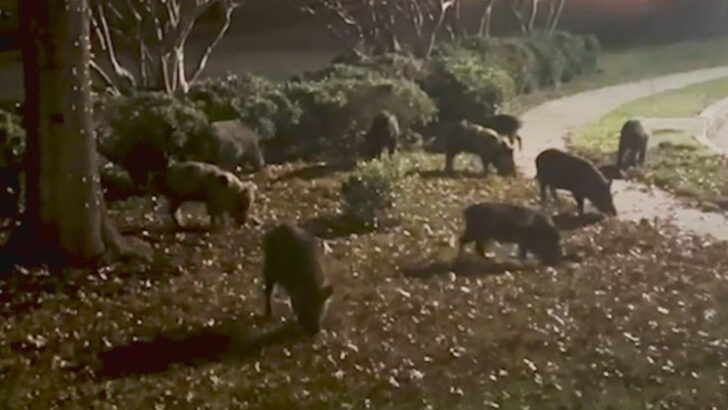Wild hogs are taking over parts of the U.S., and the damage they’re causing is no joke. These animals tear up farmland, spread disease, and even threaten native wildlife—and their numbers are exploding. Some states are seeing thousands more each year, while one is now home to over 2 million. Understanding where these invasions are happening can help protect local ecosystems before it’s too late.
Florida

In Florida, wild hogs have carved out a niche in the swamplands and forests. Their ability to thrive in such challenging environments speaks to their resilience and cunning nature. These invasive creatures pose a threat to Florida’s delicate ecosystems, damaging native flora and displacing other wildlife. The state’s warm climate and abundant water sources provide an ideal habitat for these hogs. However, managing their numbers requires coordinated efforts from local communities and wildlife agencies. Floridians grapple with the dual challenge of preserving their natural beauty while contending with these unwelcome guests.
California

California’s picturesque landscapes are under siege by wild hogs. These animals have spread across the state, from the forests of Northern California to the vineyards of the Central Valley. Their rooting behavior disrupts the soil, leading to erosion and habitat destruction. This poses a unique challenge for California’s agricultural sector, particularly in the wine industry. Despite their destructive habits, wild hogs are surprisingly elusive, often moving under the cover of darkness. As efforts to control their numbers intensify, Californians hope to protect their valuable land and resources from further damage.
Texas
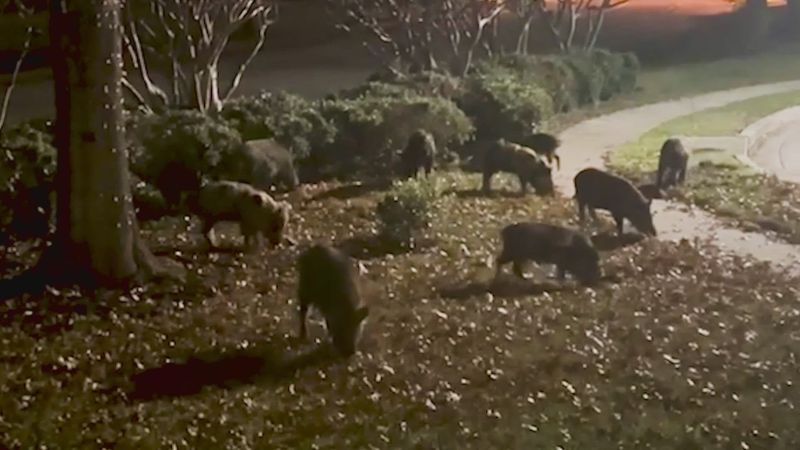
Texas faces a monumental challenge with its wild hog population exceeding two million. These animals thrive in the diverse Texan landscape, from dense forests to open grasslands. Known for their adaptability, they exploit agricultural lands, causing severe damage to crops and property. Their presence in Texas is not new; they’ve been around since the explorers first brought them over centuries ago. While their numbers swell, efforts to control the population must intensify to protect the Lone Star State’s rich agricultural heritage. The battle continues as Texans strive to manage this wild hog invasion.
Arkansas
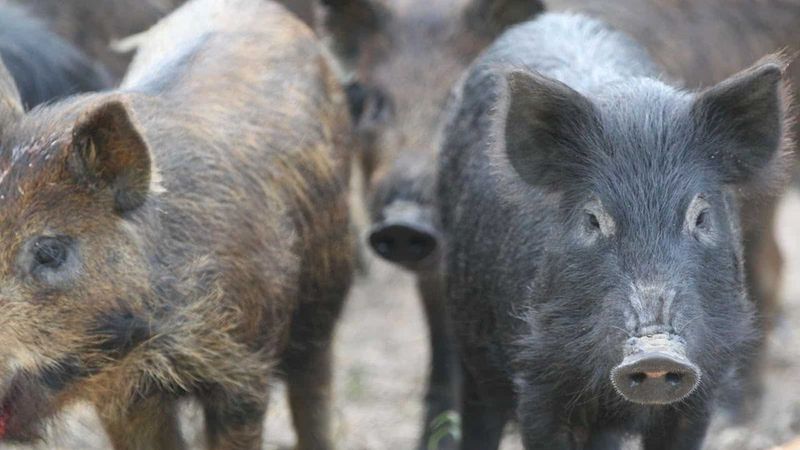
In the Natural State of Arkansas, wild hogs have become a significant concern. Their population continues to climb, threatening local agriculture and natural habitats. These hogs are often found near water sources, taking advantage of the ample food and shelter. Their rooting and wallowing behavior causes erosion and degrades water quality. Arkansas’s rich biodiversity is at risk as these invaders encroach on native species’ territories. Consequently, state authorities and landowners are collaborating to implement control measures, aiming to curb the wild hog population and restore ecological balance.
Alabama
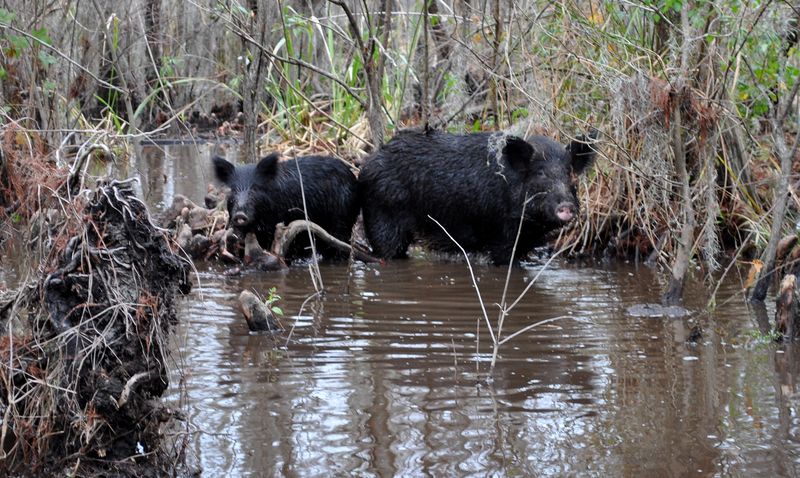
Alabama’s forests and farmlands are not immune to the wild hog menace. These adaptable creatures have established themselves firmly within the state’s borders. Their presence is most pronounced in rural areas where they raid crops and damage property. Wild hogs in Alabama are known for their elusive nature, making them difficult to track and hunt. Despite these challenges, local communities are determined to mitigate the impact of these feral invaders. Collaboration between state wildlife agencies and residents is crucial in developing effective strategies to control and reduce the wild hog population.
Georgia
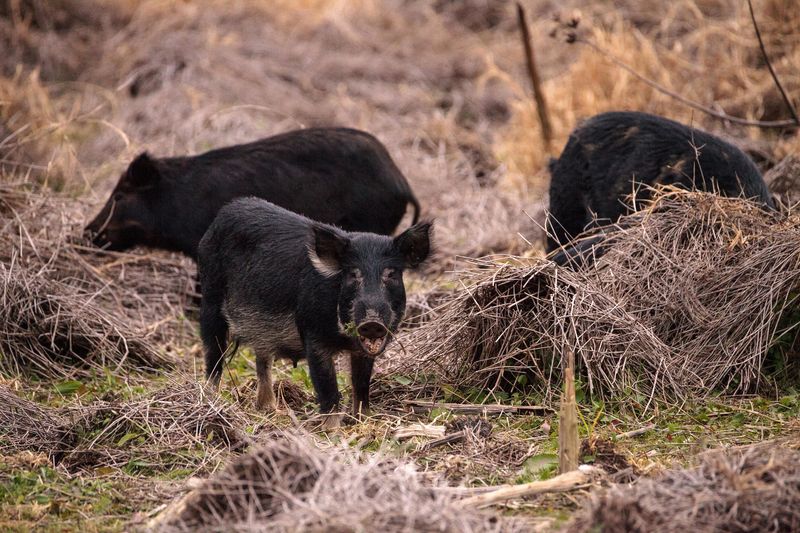
Georgia’s charming peach orchards face an unyielding threat from wild hogs. These animals have become a nuisance to farmers, particularly in agricultural areas. Their rooting and foraging behaviors lead to significant crop losses and soil disruption. Wild hogs in Georgia are notorious for their intelligence and adaptability, making them challenging adversaries. Efforts to control their population have intensified, with innovative trapping and hunting techniques being employed. Farmers and wildlife experts are working together to protect Georgia’s agricultural heritage and ensure the longevity of its iconic peach industry.
Louisiana
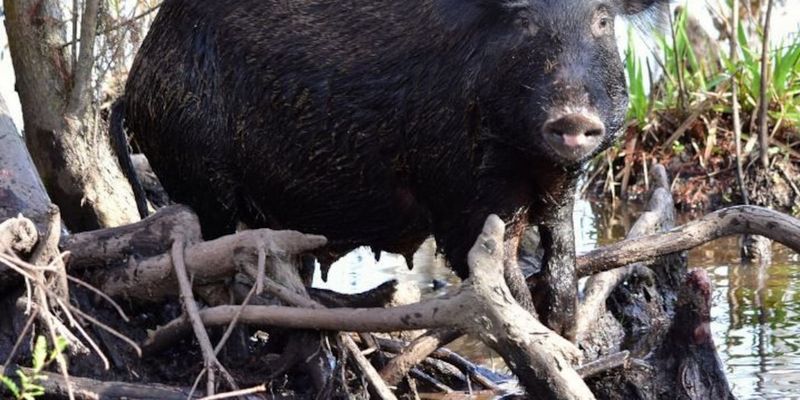
Louisiana’s bayous and wetlands provide a perfect habitat for wild hogs. These environments offer abundant food and cover, allowing their populations to thrive. The impact of wild hogs on Louisiana’s fragile ecosystems is profound, with their rooting activities causing habitat destruction and water quality issues. Wildlife biologists and local communities are working tirelessly to address this growing problem. The cultural significance of Louisiana’s bayous adds urgency to the need for effective wild hog management strategies. As the battle against these invasive animals continues, Louisiana remains committed to preserving its unique natural landscapes.
Mississippi
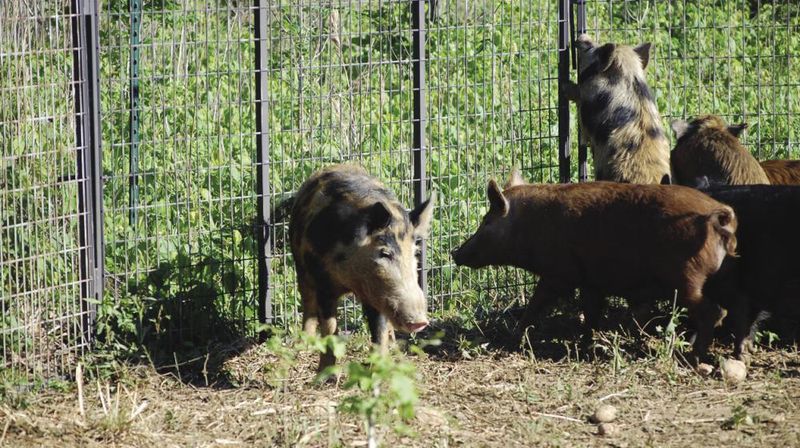
Mississippi’s fertile lands are under threat from wild hogs. These animals have adapted well to the state’s agricultural regions, causing significant damage to crops such as cotton and soybeans. Their presence poses economic challenges for farmers who must contend with both the loss of produce and the cost of implementing control measures. Wild hogs are notorious for their rapid breeding, making population control efforts more complex. However, Mississippians are resilient, employing various tactics to combat the wild hog invasion. Through collaboration and innovation, they strive to protect their livelihoods and the state’s agricultural future.
Missouri

Missouri’s wild hog population is concentrated largely in the scenic Ozarks. The rugged terrain and dense forests offer an ideal habitat for these invasive animals. Their rooting and wallowing activities lead to soil erosion and damage to native plant communities. The presence of wild hogs in Missouri poses a threat to the state’s diverse wildlife, as they compete for food and space. Efforts to manage the population include coordinated hunts and the use of advanced tracking technologies. As Missourians battle this persistent problem, they remain committed to preserving the natural beauty of the Ozarks.
Oklahoma

Oklahoma’s open plains have not escaped the wild hog invasion. These animals have spread across the state, impacting both rural and urban areas. Their rooting behavior disrupts the soil, damaging crops and infrastructure. The challenge of controlling the wild hog population in Oklahoma is compounded by their nocturnal habits and rapid reproduction. State wildlife officials are working diligently to develop effective management strategies. Community involvement and public awareness campaigns play a crucial role in addressing this issue. As Oklahomans confront the wild hog menace, they remain steadfast in their efforts to safeguard their land and communities.
South Carolina
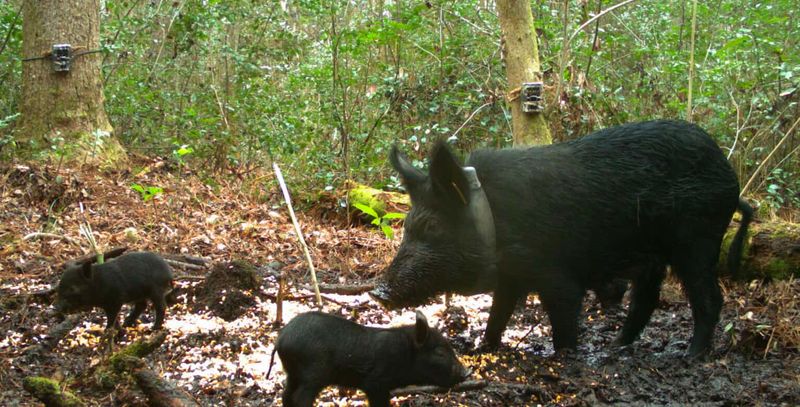
South Carolina’s coastal areas face an ongoing battle with wild hogs. These animals are well-suited to the marshy landscapes, where they find ample food and cover. The impact on local flora and fauna is significant, with wild hogs often outcompeting native species for resources. Managing their population is a priority for wildlife agencies, as they seek to protect the state’s rich biodiversity. Innovative trapping techniques and public education are key components of the strategy. South Carolinians are determined to preserve their coastal ecosystems while managing the challenges posed by these invasive creatures.
Tennessee
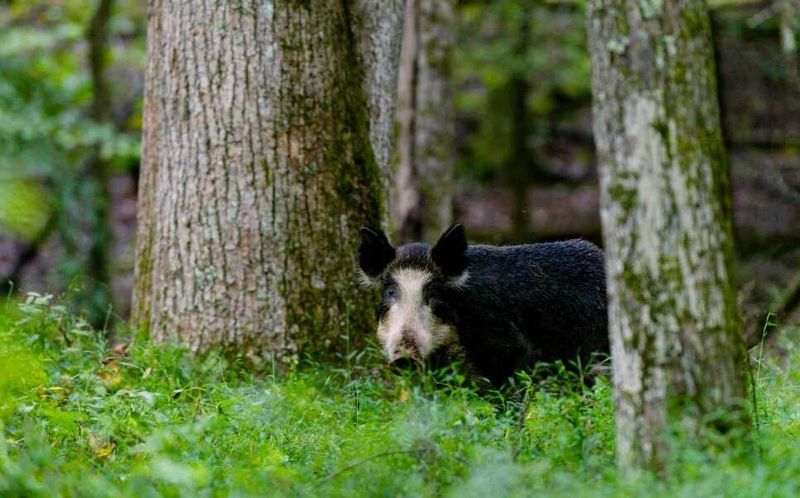
Tennessee’s Great Smoky Mountains provide a refuge for wild hogs. These animals have become well-established in the region, where they pose a threat to native plants and animals. Their rooting and foraging behaviors disrupt the delicate balance of the ecosystem, leading to habitat degradation. Park officials and conservationists are working together to control the wild hog population through targeted hunts and trapping programs. The natural beauty of the Great Smoky Mountains is at stake, driving efforts to find effective solutions. Tennesseans are committed to protecting their state’s cherished landscapes from this invasive threat.
Kentucky
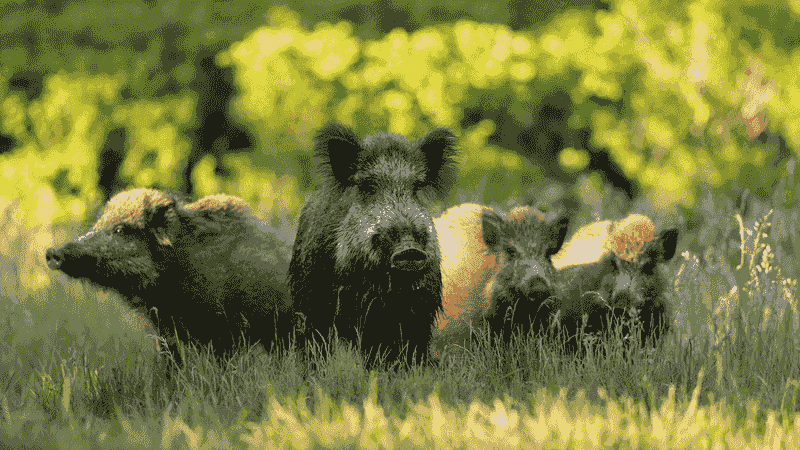
In Kentucky, wild hogs have made their presence known in the bluegrass fields and beyond. These animals pose a risk to the state’s agriculture, particularly in regions famous for horse farms. Their destructive rooting habits cause soil erosion and damage to pastures. Efforts to manage the population include collaboration between state wildlife agencies and agricultural stakeholders. Innovative techniques and public awareness campaigns aim to control the spread of these invasive animals. Kentuckians are united in their dedication to protecting their land and preserving the state’s agricultural legacy.
North Carolina

North Carolina’s forests and rural landscapes are no strangers to wild hogs. These adaptable creatures have spread throughout the state, impacting both natural and agricultural environments. Their rooting and wallowing behaviors pose challenges to landowners, leading to soil degradation and crop damage. Wildlife management officials and local communities are working together to address the wild hog problem. Collaborative efforts focus on innovative trapping and hunting methods, aiming to reduce the population and minimize damage. As North Carolinians tackle this invasive issue, they remain committed to safeguarding their land and natural resources.
Oregon
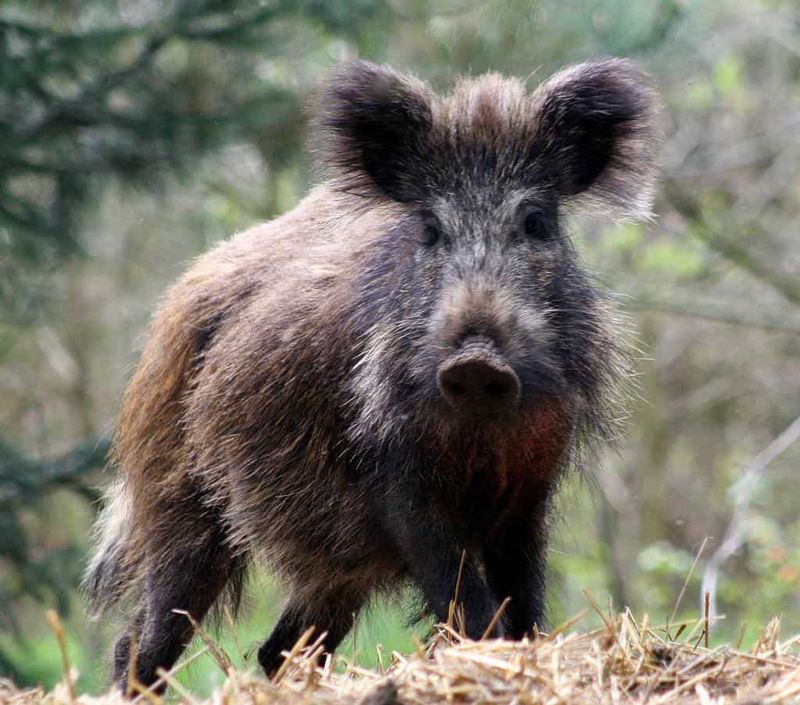
Oregon’s lush forests are under threat from wild hogs. These invasive animals have established themselves in parts of the state, posing a risk to local ecosystems. Their rooting behavior disrupts the soil, leading to erosion and habitat destruction. The challenge of managing wild hogs in Oregon is intensified by their elusive nature and the dense forest cover. State wildlife agencies and conservation groups are working together to develop effective management strategies. Public awareness and community involvement are key to addressing this issue. Oregonians are determined to protect their natural landscapes from this growing threat.
Hawaii
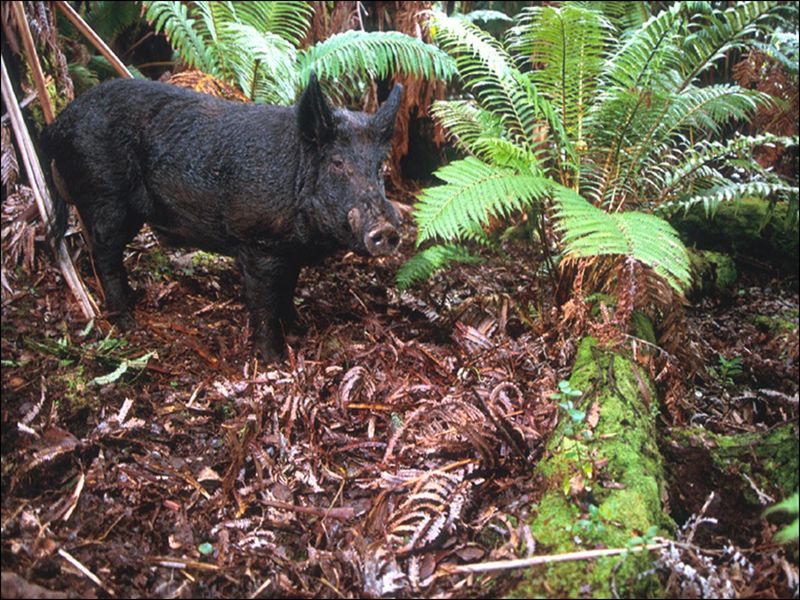
Hawaii’s unique ecosystems face a significant threat from wild hogs. These animals, introduced to the islands centuries ago, have adapted well to the tropical environment. Their presence poses a danger to native plants and animals, as they disrupt delicate ecological balances. The lush vegetation of Hawaii’s rainforests offers ample food and cover for these invasive creatures. State wildlife officials are implementing control measures to protect Hawaii’s biodiversity. Innovative techniques and community engagement are crucial in combating the wild hog problem. Hawaiians are committed to preserving their islands’ natural beauty for future generations.
New Mexico
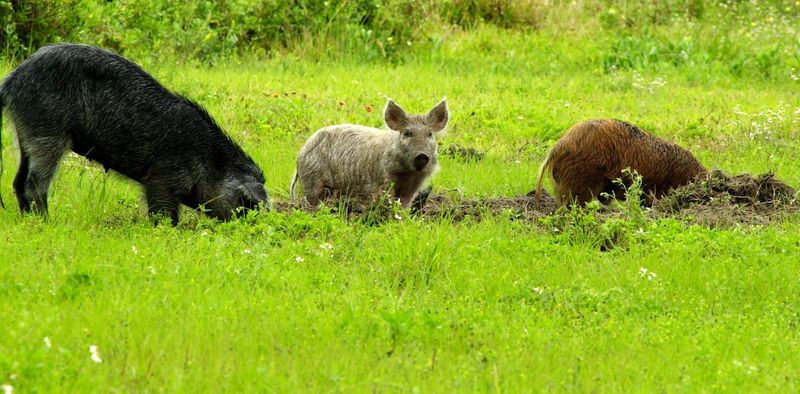
New Mexico’s arid landscapes might seem inhospitable, yet wild hogs have managed to thrive here. Their adaptability allows them to find food and water in the harsh desert environment. However, their presence poses a threat to native wildlife and fragile ecosystems. State wildlife agencies are working with local communities to implement effective management strategies. Public education and awareness campaigns are essential components of these efforts. As New Mexicans confront the wild hog challenge, they are united in their determination to protect their unique desert landscapes and biodiversity.
Arizona

Arizona’s rugged canyons and deserts have become home to wild hogs. These animals have adapted to the state’s challenging environment, posing a threat to both natural and agricultural areas. Their rooting behavior leads to soil erosion and damage to native plant communities. Wildlife management officials are working to control the population through innovative techniques and collaboration with local communities. Public awareness is a crucial aspect of these efforts, as Arizonans work to address the wild hog problem. The state’s unique landscapes and ecosystems are worth protecting, driving the push for effective management strategies.

